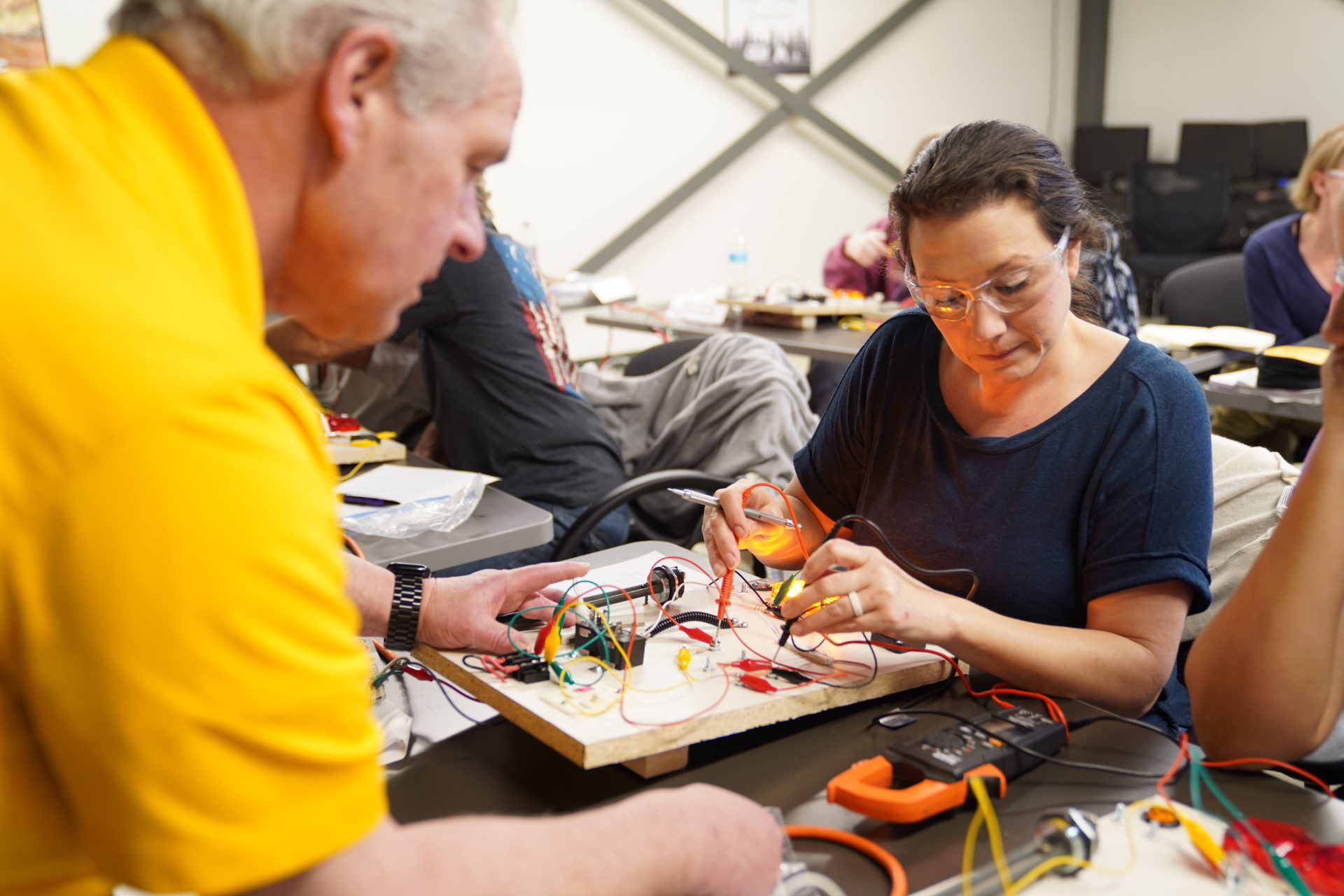
TeenLife Publishes Guide to Performing & Visual Arts Colleges for Students Interested in the Arts
Posted September 27, 2014, 3:00 pm by
TeenLife is pleased to announce the publication of the fourth annual 2014 TeenLife Guide to Performing & Visual Arts Colleges in partnership with the National Association for College Admission Counseling (NACAC).
With more than 350 colleges listed both alphabetically and geographically by region among its 100 pages, this handy guide is truly a “must-read” for all parents, students, and educators researching colleges that offer majors in performing and/or visual arts. The guide also provides a list of the 20 NACAC Performing & Visual Arts College Fairs taking place across the country from September to November. The guide is available in print form to fair visitors as well as online at TeenLife.com.
How to Pick the Perfect Performing and Visual Arts College
Whether a student wants to dance, draw, build, sing, design, or direct, finding the perfect performing and visual arts college can be a challenge. Here are a few critical things to think about when choosing this type of college.
1. A Difference of Degree
Prospective arts majors have three degree options: a traditional Bachelor of Arts (BA) degree with a major in the arts, a focused Bachelor of Fine Arts (BFA) for artists/performers or a focused Bachelor of Music (BM) for musicians.
A BA degree is a typical liberal arts degree with a survey of courses in different areas along with a specialty chosen in one area. This allows the study of a variety of subjects along with arts and leaves the door open to other possible career choices.
A BFA or BM degree is more intensely focused in the arts than a traditional BA degree. It is for students with a high level of commitment to their arts discipline.
2. Types of Colleges
Conservatories and stand-alone arts schools offer an immersion-type experience for students earning a BFA or BM degree. Typically smaller, all students will be artists and the atmosphere is often highly competitive.
Many larger universities offer BFA/BM degrees as well as BA degrees in the a
rts where students can pursue the more specialized degree while taking liberal arts courses and a possible double major in something unrelated to visual or performing visual arts.
3. The Application Process
In addition to completing a typical college application, students in the visual or performing arts will need to prepare a portfolio or audition. Each school will have different requirements listed in their collateral and on their website. Keep in mind that although a portfolio or audition is an important part of the application, arts programs do consider academic records and test scores.
4. Assessment
If a student is interested in pursuing an art major and career, he/she should seek objective opinions on their creative abilities in the field. In addition to asking for honest feedback from high school and private teachers, students can get outside assessments from professionals at local symphony, dance troupe, or theatre companies. Visual arts students can receive portfolio evaluations from college representatives at one of the many National Portfolio Days.
[Search for an Arts College in your area or anywhere around the world!]
Other Campus Considerations
Remember, all students benefit from visiting the colleges that interest them and asking questions about academics, student life, and other facets of the college experience. The "basics," so to speak, are:
- Location: Attending school in urban areas will have access to professional venues such as museums, galleries, theaters, and concerts. There are also many international arts colleges that provide study abroad and an arts education.
- Facilities: Arts students should look at a college's studio space, practice rooms, audio/visual studios, and any other resources specific to their field of study. Ask questions about how accessible these resources are to students.
- Study Abroad: What opportunities exist for students to go abroad to deepen their knowledge and skills?
- A Good Fit: A student needs to find a college that fits their personality, interests, and goals.
[Request information from popular Performing and Visual Arts Colleges.]
Career Options & Growth in the Arts Fields
There is a wide range of expanding professions in the arts fields. According to the U.S. Bureau of Labor Statics (BLS), there will be 2.2 million Americans working as artists by 2020 and they predict significant growth in the next decade. Here are some growing fields:
- Graphic Designer: The BLS predicts a 61% growth in graphic design/digital design by 2020.
- Architect: The BLS predicts 24% growth in architecture based on the need for colleges/universities to update facilities and baby boomers needing more retirement locations communities.
- Film/video editors/camera operators: Organizing and editing film/video is more and more relevant in the digital age and digital media.
- Projection Design: Brings film, video, slides and multimedia to LIVE stage performances.
- Arts Educators: Traditional arts education and middle/high school coursework is continually evolving to include graphics, film/video, digital media curriculum as electives.
- Museum Curator: The BLS predicts that job opportunities for museum/art curators will grow by 25% as more and more students pursue arts careers.
Check out our latest Performing & Visual Arts Guide!
Blog Categories
- Career Advice
- College Admissions
- Colleges & Universities
- Financial Aid and Scholarships
- For Counselors
- For Parents
- For Students
- Gap Years
- Mental Health and Wellness
- Online Learning
- Performing and Visual Arts
- STEM Majors and More
- Summer Programs
- Teen Volunteering
- Trade & Vocational Schools
- Tutoring & Test Prep

Organization with listings on TeenLife? Login here
Register for Free
We’re here to help you find your best-fit teen-centered academic and enrichment opportunities.
Forgot Password
"*" indicates required fields









